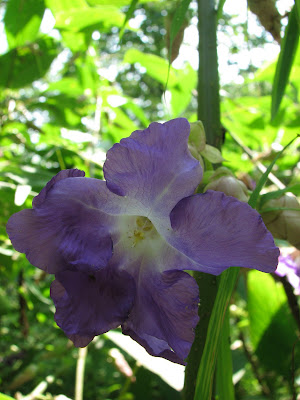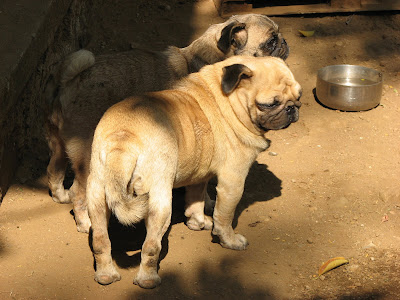Van Vadi, a 64-acre forest farm (as the owners like to call it), on the foothills of Sahyadri, offers a complete rustic experience. That's why it attracts lot of urban dwellers who come to be one with nature, away from their daily chaotic life.
 It has no electricity, piped water, mobile network, or fancy cottages, simply bamboo huts and mats to sleep on. The land, which was bought 14 years ago with contribution from around two dozen people, is covered by 80% of dense forest and has organically grown vegetables.
It has no electricity, piped water, mobile network, or fancy cottages, simply bamboo huts and mats to sleep on. The land, which was bought 14 years ago with contribution from around two dozen people, is covered by 80% of dense forest and has organically grown vegetables.Van Utsav or Forest Festival
For the last three years the owners of Van Vadi have been organising 'Van Utsav' or 'Forest Festival,' for six days, and it actually is quite a unique concept. Many families come with their kids and grandparents to participate in this festival to celebrate the harmony with nature.
 Various activities are included like gardening, planting and working on building a house.
Various activities are included like gardening, planting and working on building a house. The owners also encourage voluntary workshops conducted by guests themselves, it could be on anything, carpentry, yoga, natural healing etc. Cooking is done on a rotating team basis, using organic food, cereals, vegetables etc, and drinking water can be filled directly from the stream.
There are seasonal streams flowing through the undulating land. There are over 30 uncultivated species growing in the wild and over 35 recognized medicinal plants. Living for a week in such environment will definitely be very refreshing.
New development woes
This is a common concern these days. A new construction coming up on the neighbouring land of Van Vadi is threatening to harm the ecology of the forest land and affect its flora and fauna. The owners are taking up the matter seriously with various authorities and hoping that the damage is minimized.
We are looking forward to visiting this place the next time we are in Karjat and meeting with one of the owners, Bharat Mansata, to know more about this wonderful concept.
How to Reach Van Vadi?
Drive via the old Bombay-Poona highway, turning left at Karjat Chowk, and proceed towards Kashele village, 18 kms from Karjat. At Kashele, ask for the road which leads to Vaara, which is about 8 km from Kashele. The Vaara-Chinchwadi road leads to Van Vadi that comes on the left, beside a roadside hand-pump, just before Vaara village.





















